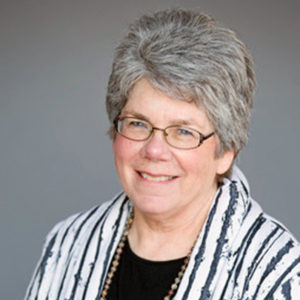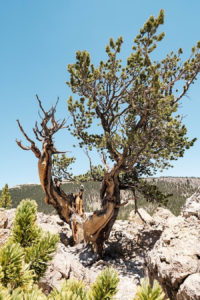 A recent trip to the Sierra Nevada mountains included two remarkable experiences with place and kinship—and together with two longtime, ongoing experiences led to a deepening awareness of kinship with place.
A recent trip to the Sierra Nevada mountains included two remarkable experiences with place and kinship—and together with two longtime, ongoing experiences led to a deepening awareness of kinship with place.
Only recently learning of the ancient bristlecone pine forest, this trip offered a chance to meet these beings inhabiting parts of the Sierra Nevada mountains. For many years the sequoia trees in California have beckoned me. Both the bristlecone pines and the sequoia trees are particular about where they grow. Both choose spots with specific environmental and mineral conditions, so there are not many places one can go to meet these beautiful trees. Bristlecone pines grow in a more alkaline soil and in harsh climate conditions. The pines don’t necessarily like this kind of soil, but they have adapted to it and to the harsh climate conditions. Because other species of trees do not grow well there, the bristlecones have little competition. This lack of competition and the fact that their adaptation has made their wood very hard and able to withstand the climate conditions means that many of them have lived very long lives—some over 4,000 years old. A lesson in adaptation to be sure!

bristlecone pine
The moment we entered the forest I felt a kinship with these lovely bristlecone pines—a feeling that bordered on reverence for the wisdom and tenacity. To be able to touch and open to this place and these ancient elders, to put my hand on these ancient trees—several thousand years old—connected my soul to the soul in this place. An instant knowing that I belonged was so intense and so unexpected I could not hold back the tears. It doesn’t matter that I probably will not return—the forever connection is made.
My understanding of kinship was also brought close to the surface in Sequoia National Park. Like the bristlecone pines, sequoia grow in certain ecological areas. Setting some of these spaces aside in a national park offers these elders a protected place to keep growing. Not only did the sheer size of these “gentle giants” produce a sense of awe, but the recognition of the age and community of the sequoia gave me the sense of kinship. Being able to touch brought the same emotions as the bristlecone pines did—one of belonging to life. Their “bigness” does not overshadow the other trees; instead the feelings of connectedness and belonging proclaimed kinship, a diverse community who have learned to live together, supporting each other in this particular environment.

sequoia
My reflections about these places brought to mind two other longtime experiences with place and kinship. I have long known I’m part of the Great Plains that encompass much of western Nebraska. Traveling across the plains may be boring to many, but each time I find myself drawn into a history and life that has been since our planet was made. The sense of timelessness and full acceptance arises each trip across this vast prairie. I am part of the spirit and ancestors who have inhabited this place throughout the years and I am drawn into the stories from these prairies just as I am drawn into the stories of my relatives on a family tree.
Another kinship place is the Black Hills in western South Dakota, especially the Pe’ Sla. Each time I make that journey I feel that magnetic pull strengthening as I get closer to the heart of the Black Hills—the Pe’ Sla. The Pe’ Sla is a prairie high in the center of the Hills, and I have spent time there in pilgrimage and in resting. I am one with the grasses, feeling my roots going deeper each time I visit. I am part of the ongoing history and life of these hills, the trees, rocks and soil. I look for the groves and individual trees I know from past visits. I search out the buffalo herds to greet them each time. I breathe in the prairie breezes and smell the earthiness of the grasses and soils, and I settle into the rhythms of each day.

Black Hills prairie
All four of these places have increasingly taught me about kinship. These places have drawn me into a physical relationship. All my senses are awakened and I see, feel, smell, taste and hear the places. My breath mingles with the breath from all the living beings in these places. My smell mingles with all the smells of these places. I am with kin. My heart and soul belong. Mystery mingles with reality in these places.
Admittedly, these places drew me, called me, so it was easy for me to let myself belong. Now, I’m wondering about opening myself to any place in which I find myself—to recognize the kinship in any place. This journey may not be so easy. Feeling the kinship in a small inner-city vacant lot will require all my energy, but I know somehow the relationship is there—just like human family, we are one, and I now must behave in ways that show we are kin.
—Ellen Bruckner
images from Unsplash


